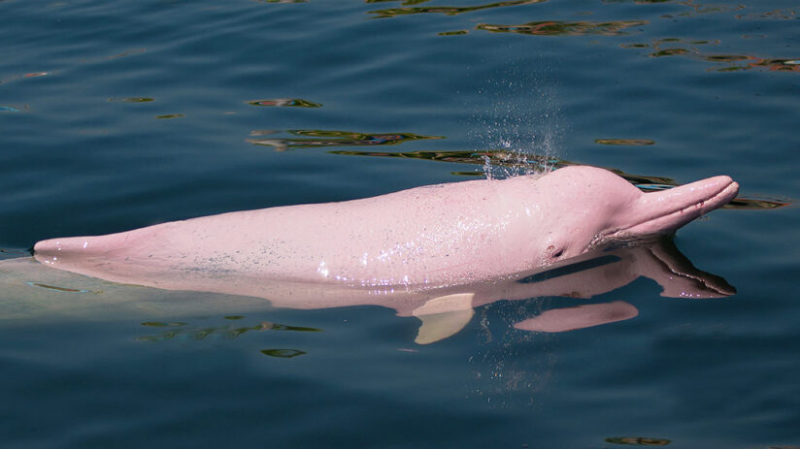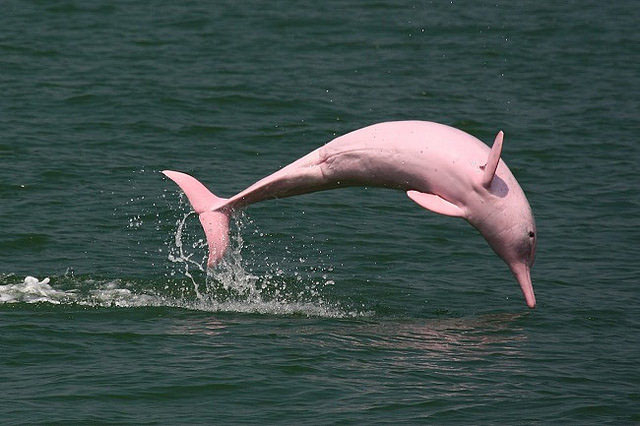Pink Amazon Dolphin
The pink amazon dolphin, also known as the pink river dolphin, can be found in all of the Amazon river basins in Bolivia, Brazil, Colombia, Ecuador, Guyana, Peru, and Venezuela. It only inhabits freshwater. The Amazon river dolphin is the largest species of river dolphin, with mature males growing to a length and weight of 2.5 meters (8.2 feet) and 185 kilograms (408 lb), respectively.
The moniker "pink river dolphin" comes from the pink tint that adults develop, which is more pronounced in males. Males are 16 percent longer and weigh 55 percent more than females, making sexual dimorphism quite obvious. They consume up to 53 different types of fish, including croakers, catfish, tetras, and piranhas, making them one of the toothed whales with the most varied diets. They also eat other creatures like freshwater crabs and river turtles.
Despite being protected in Brazil, poachers relentlessly kill dolphins for their fatty blubber, which is then used as bait to catch predatory catfish. As a result, the dolphin population continues to halve every ten years and is currently classed as an endangered species by the IUCN. In other regions of the Amazon, water pollution and habitat fragmentation caused by dam construction pose growing risks to dolphin populations. Since female river dolphins typically give birth to just one calf every four to five years, population growth can be sluggish and challenging.












